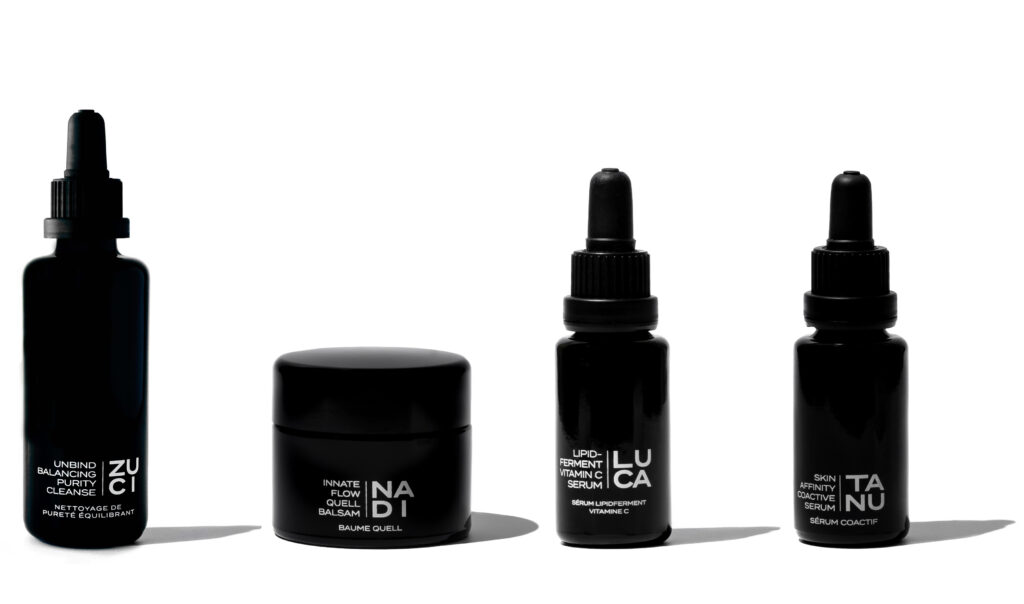There are many different methods of extracting plant compounds for use in cosmetics, here are four of the most common ones:
- Cold-Pressing: Cold-pressing involves mechanically pressing the ingredient (such as seeds or fruits) at low temperatures to extract oils or juices without the use of heat or chemicals. This method helps preserve the natural properties of the ingredients, including vitamins and antioxidants.
- Steam Distillation: Steam distillation is a method used to extract essential oils from plant materials. It involves passing steam through the plant material, causing the essential oil to evaporate. The steam and oil vapours are condensed back into a liquid, which is collected. This method is suitable for extracting volatile compounds from aromatic plants.
- Solvent Extraction: Solvent extraction involves using solvents such as hexane, ethanol, or supercritical CO2 to dissolve the desired compounds from the raw material. After extraction, the solvent is removed, leaving behind the concentrated extract. This method is often used for extracting lipophilic compounds like oils, waxes, and pigments. However, it may require additional steps to remove residual solvents.
- Maceration: Maceration involves soaking the raw material in a solvent (usually oil or alcohol) to extract its bioactive compounds. The mixture is allowed to sit for a certain period, allowing the solvent to dissolve the desired compounds. Afterwards, the mixture is filtered to separate the extract from the solid material. This method is suitable for extracting lipophilic and hydrophilic compounds, depending on the choice of solvent.
In this article, we are concentrating on the most sustainable cosmetic ingredient extraction method.
CO2 Extracts Explained
CO2 (carbon dioxide) Extracts are derived from a unique extraction process known as supercritical carbon dioxide extraction. Carbon dioxide is found only as a gas or as a solid in the form of dry ice.
The extraction process consists of pumping pressurised carbon dioxide into a chamber filled with plant matter. When carbon dioxide is squeezed under very high pressure, it creates liquid carbon dioxide, which can be used for extraction purposes.
When the pressure is further increased (to 1,711 times normal atmospheric pressure) along with the temperature of 33°C, the carbon dioxide enters the ‘supercritical’ phase. This is an unusual state where carbon dioxide acts like a gas, yet is as dense as a liquid.
In this supercritical state, carbon dioxide is a very effective solvent for extracting any oily (lipophilic) compounds from the plant material and in some cases, water-soluble compounds as well.
Once the pressure is released at the end of the extraction process, the carbon dioxide evaporates, leaving an extremely pure and efficacious plant extract behind.
VIDEO CO2 EXTRACTION TECHNOLOGY VISUAL
If like me you are a visual person, watch this quick 45-second video to understand the process:
There are two types of CO2 Extracts
- SELECT EXTRACTS – One example is Frankincense a powdered resin is extracted for a limited period so that the final extract contains 90% plus of aromatic compounds, the same found in the steam-distilled essential oil.
- TOTAL EXTRACTS – The plant material has been extracted for the time it requires to remove all oily, lipophilic compounds, including vegetable oils and waxes. One example is Calendula CO2, the total extract is desired because the most active ingredients faradiol and its esters, are both strongly anti-inflammatory and healing, require a longer extraction to remove and are too heavy to extract using a steam distillation process.
ADVANTAGES OF CARBON DIOXIDE EXTRACTS
The most active compounds are too heavy to be extracted with steam distillation. Carbon dioxide extraction will remove these compounds.
During the process, the plant material is not exposed to air (oxygen) or heat, as compared to steam distillation, none of the compounds change or oxidize during extraction. Hence, the final extract remains the same as in the plant – the same composition and aroma.
- The lower temperature of operation – Heat-sensitive components remain intact and importantly undamaged
- Exclusion of oxygen – Oxidation-sensitive components remain intact
- Higher selectivity and higher mass transfer lead to a higher yield and a longer shelf life
- Cleaner Process – In terms of environmental impact and yield – Carbon dioxide compared to using hexane for extraction, fully evaporates from the final extract, leaving an extremely pure extract with no solvent residues
- Longer shelf-life – Of the product compared to conventional extraction methods
- Finer flavour and scent – Compared to conventional products.
- Concentrated – This means these CO2 extracts are effective at low dilutions.
- Superior Quality Lipids – With greater efficacy than cold-pressed oils.
All FIFTY7KIND Products incorporate a select mix of CO2 plant extracts. For the purity, efficacy, and wholeness of the plant compounds. Ensuring the bio-availability of the plant compounds that your skin can recognise and utilise. High-dose skin nutrition.

Until next time, be human, be kind, be you.

REFERENCES
- BOOK // The Complete Guide to Aromatherapy S. Battaglia Second Edition
National Library of Australia - WEB // What are CO2 Extracts? Mystery & Methods Explained
https://formulabotanica.com/what-are-co2-extracts/ - VIDEO // Visit for more information
www.nisargabiotech.com - Fedorowski A, Hamrefors V, Sutton R, van Dijk JG, Freeman R, Lenders JW, Wieling W. Do we need to evaluate diastolic blood pressure in patients with suspected orthostatic hypotension? Clin Auton Res. 2017 Jun;27(3):167-173. doi: 10.1007/s10286-017-0409-7. Epub 2017 Feb 27. PMID: 28243824; PMCID: PMC5440543. https://www.ncbi.nlm.nih.gov/pmc/articles/PMC5440543/
- Reynolds OL, Osborne TJ, Barchia I. Efficacy of Chemicals for the Potential Management of the Queensland Fruit Fly Bactrocera tryoni (Froggatt) (Diptera: Tephritidae). Insects. 2017 May 9;8(2):49. doi: 10.3390/insects8020049. PMID: 28486404; PMCID: PMC5492063. https://www.ncbi.nlm.nih.gov/pmc/articles/PMC5492063/
- Dawid-Pać R. Medicinal plants used in treatment of inflammatory skin diseases. Postepy Dermatol Alergol. 2013 Jun;30(3):170-7. doi: 10.5114/pdia.2013.35620. Epub 2013 Jun 20. PMID: 24278070; PMCID: PMC3834722. https://www.ncbi.nlm.nih.gov/pmc/articles/PMC3834722/
- Zolotukhin S. Metabolic hormones in saliva: origins and functions. Oral Dis. 2013 Apr;19(3):219-29. doi: 10.1111/odi.12015. Epub 2012 Sep 21. PMID: 22994880; PMCID: PMC3530011. https://pubmed.ncbi.nlm.nih.gov/22994880/
Comments +